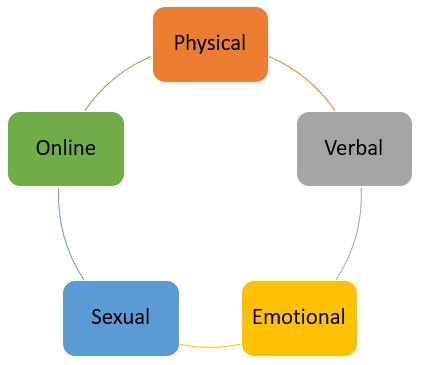Anti-Harassment and Bullying
Scope of this chapter
Harassment: Intentional or unintentional behaviour that violates dignity and creates an intimidating, hostile, degrading, humiliating or offensive environment. Can be a one-off incident or a series of incidents.
Bullying: Repeated intentional behaviour aimed at hurting the recipient physically or emotionally. Often experienced for a prolonged period.
As a service we should not tolerate any form of harassment or bullying that is directed towards the people we support, each other and any visitors.
This chapter will help you to understand what is meant by harassment and bullying so that you can recognise it and take appropriate action to report it.
Protecting people from harassment and bullying is a core principle and value. This means that it applies to everyone and is always relevant when planning for or providing care and support.
Relevant Regulations
Regulation 10: Dignity and respect
Regulation 13: Safeguarding service users from abuse and improper treatment
Related Chapters and Guidance
It does not matter whether the behaviour happens routinely or is a one-off incident-it is still harassment if it is unwanted.
Example of some harassment behaviours:
- Patronising or belittling comments;
- Comments about a person’s appearance, body or clothes;
- Leering or staring at a person's body;
- Unwelcome sexual invitations or pressure;
- Promises or threats to coerce someone into doing something they don’t want to do;
- Displaying offensive or sexually explicit material others find offensive;
- Touching, caressing, hugging or indecent assault;
- Trolling and cyberstalking online.
In the context of work, harassment behaviour can also be:
- Unfair or impractical work loading;
- Always giving someone the worst tasks to do;
- Always giving someone the worst shifts.
Bullying and harassment behaviours can be similar. The main difference between harassment and bullying is that bullying is always intentional and always happens more than once.
The following examples are not an exhaustive list:
Physical: pushing, poking, kicking, hitting, biting, pinching etc.
Verbal: name calling, making someone the butt of jokes, sarcasm, spreading rumours, making threats, teasing, talking down to someone.
Emotional: isolating someone, tormenting someone, hiding possessions, excluding someone, humiliation, intimidation.
Sexual: inappropriate touching, sexual comments, leering, homophobic abuse.
Online: sending nasty messages, posting nasty posts, sharing embarrassing or hurtful photographs.
Harassment and bullying are always morally wrong. However, there are circumstances when the behaviour is also unlawful.
Under the Equality Act 2010 it is unlawful to harass or bully anyone because of one or more protected characteristics.
Protected characteristics are:
- Age;
- Race;
- Religion and belief;
- Disability;
- Gender or gender identity (including gender reassignment);
- Sexual orientation;
- Marriage and civil partnership;
- Pregnancy and maternity.
Those found guilty of discrimination can find themselves ordered to pay significant damages to the affected person.
For further information about discrimination see: Equality, Diversity and Human Rights.
Under a range of UK laws, some specific harassment and bullying behaviour can carry significant criminal punishment in its own right.
For example:
- Abuse of position of trust;
- Assault;
- Criminal damage;
- False imprisonment;
- Making threats to destroy or damage property;
- Unlawful wounding.
Harassment and bullying behaviour is a hate crime if it can be proven to have been motivated by hostility based on the person’s race, religion, disability, sexual orientation, or transgender identity.
If a hate crime has taken place, any other punishment given can be significantly increased by the courts.
Further guidance is available from the Crown Prosecution Service (CPS) website.
See: Hate crime
Not everyone we support understands what harassment and bullying is - they may not recognise it or may tolerate it if they think it is a part of a normal healthy relationship.
If we recognise it is happening, or we are told it is happening, we must take action to stop it.
This could involve supporting the person to make a complaint to the registered person, the CQC or the police, whichever they wish to do.
If the behaviour is being carried out by staff members, this should be reported to your line manager or the registered person.
See: Whistleblowing
Harassment and bullying should always be managed as a safeguarding adults' concern.
See: Safeguarding and Deprivation of Liberty
Any allegations against staff members should be managed through relevant Human Resources procedures and processes.
All staff have the right to work in a safe environment, free from harassment and bullying.
Staff that feel they are a victim of harassment or bullying should make a record of the behaviour that took place towards them. This should include the name of the person carrying out the behaviour, the nature of the behaviour (including any specific comments made), the date, time, and location of the incident and whether there were any witnesses to it.
Details of the harassment and bullying behaviour should be reported to a line manager or the registered person. If the complaint relates to the behaviour of the registered person, it is advisable to whistleblow to the Care Quality Commission directly.
See: Raising a concern with CQC
Tel: 0300 061 6161
Email: enquiries@cqc.org.uk
Whoever receives the complaint should investigate it fully using relevant procedures, and appropriate action should be taken to reduce the risk of a future occurrence. The staff member should not experience further discrimination or be negatively impacted on because they have made a complaint. For example, they should not be moved from a day shift to a night shift unless they wish to do this.
If the staff member affected is not satisfied that their complaint has been taken seriously or feels they have been harassed or bullied intentionally, they may wish to also make a complaint to the police.
Last Updated: August 13, 2025
v17